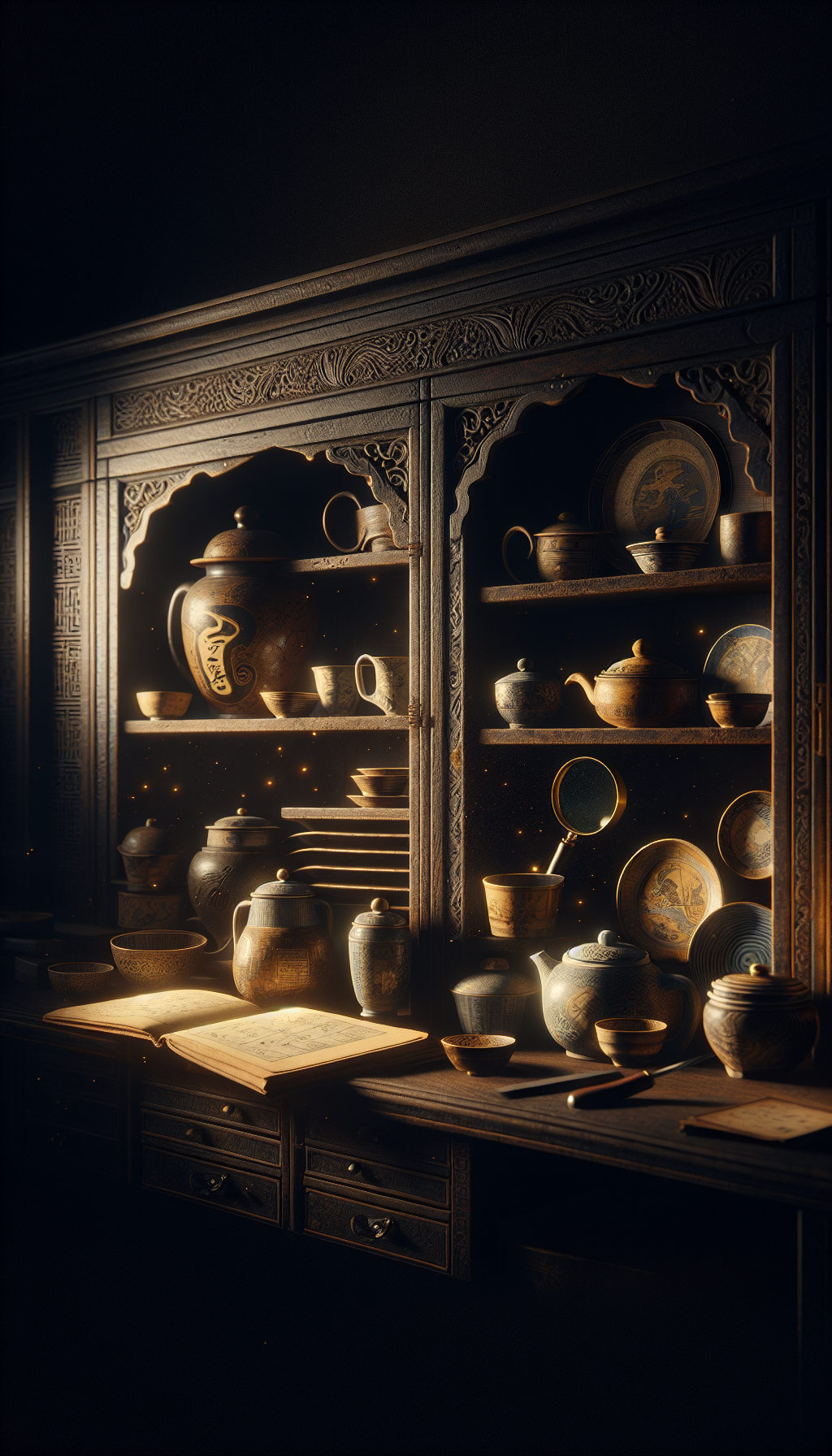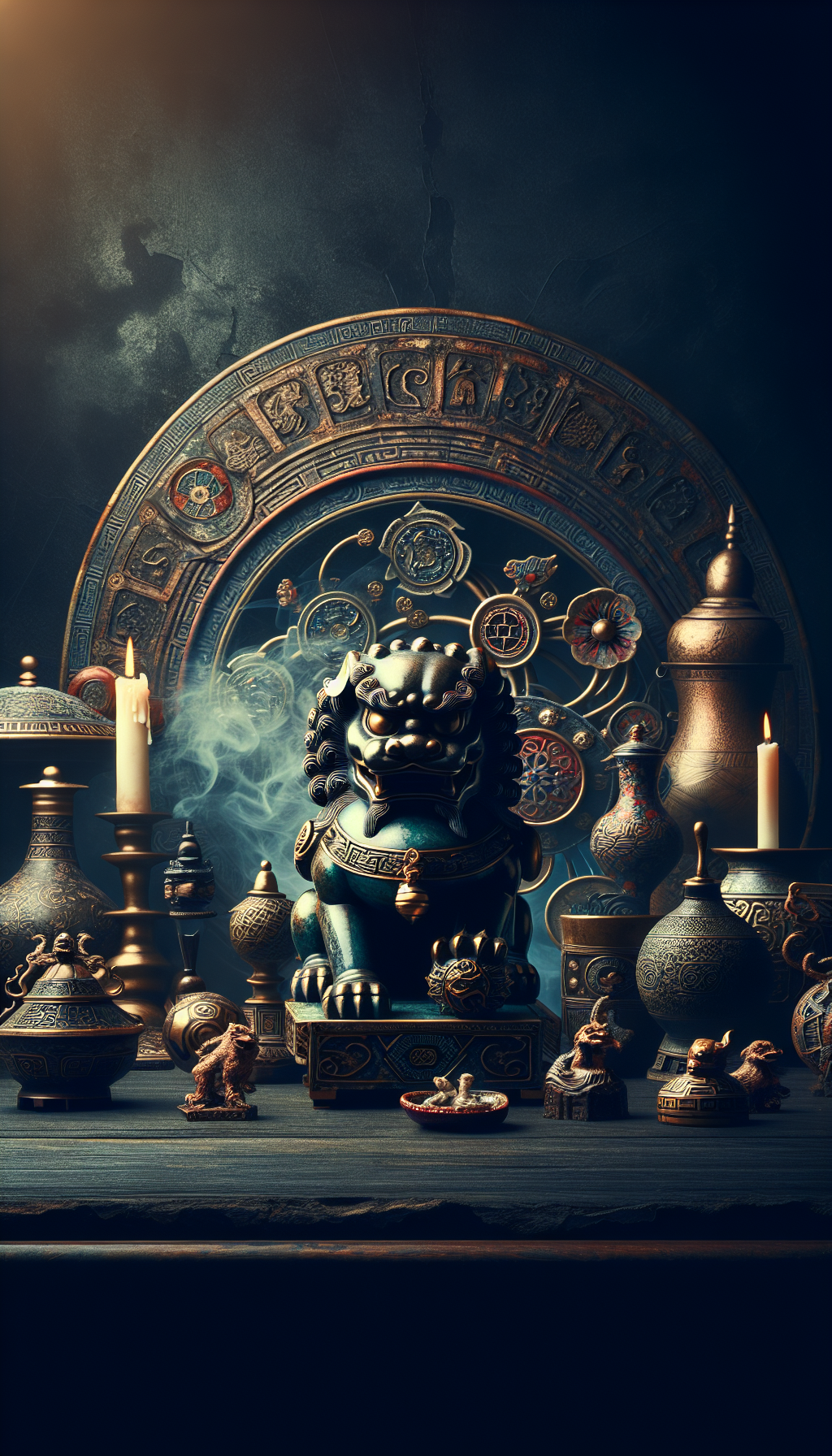A 19th Century Japanese Hand Carved Meiji Period Mother Of Pearl Six Paneled Room Screen Appraisal
What You’re Looking At: Byōbu, Raden, and Meiji Export Art
The object in question is most likely a six-fold Japanese byōbu—a folding room screen—dating to the Meiji period (1868–1912). These screens combine a wooden frame and paper or fabric core with lacquer and inlay decoration. During the Meiji era, Japan’s opening to global trade spurred a flourishing export market in luxury crafts. Among the most admired are screens decorated with:
- Raden: paper-thin mother-of-pearl shell inlay, carved and engraved, set flush with a lacquer ground.
- Shibayama: applied, often raised montage of carved shell, bone, ivory, coral, and horn on lacquer or ivory plaques; many Meiji export screens mix raden and shibayama elements.
When a listing describes “hand carved” for a Meiji mother-of-pearl screen, it usually refers to the individually hand-carved shell pieces (often engraved with fine lines) and sometimes carved wood framing elements. True Meiji craftsmanship shows sharp, deliberate toolwork and seamless integration of inlay with lacquer.
Six panels (rokumai) is a traditional format, large enough to function architecturally, delineate space, and display a narrative or seasonal cycle across a continuous surface. Subjects commonly include courtly processions, cranes and phoenix, peonies and chrysanthemums, or lyrical landscapes with pavilions and bridges—imagery intended to convey auspiciousness, literati taste, and technical virtuosity.
Identification Guide: Materials, Construction, and Motifs
Use these specific observations to confirm what you have:
Format and Hinges
- Traditional byōbu are connected by paper hinges beneath the surface layers, not continuous metal or piano hinges. You should see flexible folding with no hardware bridging the seams.
- Metal corner mounts or handles can be present as applied furniture, but they do not join the panels.
Core and Ground
- Core: lightweight wood lattice with multiple layers of washi paper adhered over both faces. The assembly is surprisingly light for its size.
- Ground: black roiro lacquer (mirror-polish) or a dark-brown lacquer, sometimes enlivened with sprinkled gold nashiji (gold flakes in lacquer). Look for a deep, even luster rather than a plastic-like gloss.
Inlay Technique
- Raden: wafer-thin shell (mother-of-pearl/abalone) cut into blossoms, feathers, pavements, or hairlines, laid flush with the lacquer. Under magnification, edges look clean, with occasional incised lines for detail. Iridescence shifts with angle.
- Shibayama elements (if present): thicker, raised appliqués of shell (and historically sometimes ivory or bone). You may see depth and cast shadows. Pieces can be pinned or adhered; aged examples show hairline separations along the appliqué edges.
- Engraving: fine incisions colored with ink or gold to articulate veins in leaves, feather barbs, or kimono patterns.
Borders and Fabrics
- Silk brocade borders (ichimonji) at the top and bottom, often with repeating geometric or floral patterns. Brocade oxidation to a warm, slightly matte tone is consistent with age; bright synthetic shine suggests a later replacement.
Woodwork
- The outer frame may be lacquered or stained hardwood. Hand-planed surfaces and minute irregularities at miters are consistent with 19th-century work. The wood rails might show subtle carving, beading, or ridges.
Motifs and Composition
- Meiji export taste favored:
- Kachō-ga (birds-and-flowers): cranes, peafowl, pheasants; peonies, cherry blossoms, chrysanthemums.
- Courtly genre scenes: musicians, courtiers, or elegantly dressed figures in pavilions.
- Landscape scrolls: bridges, boats, pine, and layered mountains.
- Look for coherent narrative flow across panels and balanced negative space—hallmarks of better studios.
- Meiji export taste favored:
Signatures and Tablets
- Artist or studio signatures may be in gilt lacquer cartouches in a corner, sometimes accompanied by a seal. Many screens are unsigned; absence does not imply inferior quality.
Dimensions
- Typical Meiji six-panel room screens stand roughly 150–170 cm (59–67 in) tall. Panel widths often range 45–55 cm (18–22 in) each.
Dating and Attribution: Meiji vs. Later Imitations
Distinguishing late 19th-century screens from later (Taishō/Showa) or non-Japanese examples:
Japanese vs. Chinese/Macau mother-of-pearl screens
- Japanese byōbu: paper hinges; refined composition with disciplined negative space; raden inlay tends to be thinner and flush, with subtle engraving.
- Chinese/Macau export screens (20th century): often heavy coverage of shell with dramatic palace scenes; panels joined by metal hinges; thicker, whiter shell giving high-contrast decoration. Inscriptions typically in Chinese; mounts can be brass with screw heads visible.
Meiji vs. Later Japanese
- Meiji lacquer: deep roiro polish with minute, even surface micro-crackle developed over time; shell pieces hand-cut with slight variation.
- Later mass-production: more uniform shell thickness and repetitive motifs; synthetic or polyurethane-overcoated surfaces with glassy, cold sheen; brighter, modern brocades.
- Hardware clues: visible machine screws and uniform Phillips heads are later repairs or later constructions. Hand-cut or concealed joinery is more consistent with Meiji.
Wear and Patina
- Genuine age shows edge softening at folds, minor lifting at some inlay edges, slight sun-fade lines if displayed, and oxidation to silk borders. Excessively even “antique” patina can be artificial.
Mixed-Media Red Flag
- If you see elephant ivory appliqués (common in some Shibayama), be alert to CITES restrictions. Documentation of pre-Convention age can be crucial for any cross-border movement or sale.
Attribution to a particular studio is challenging without signatures or distinctive stylistic fingerprints. Major centers included Tokyo (Edo), Kyoto, and Kanazawa, with artisans trained in lacquer and shell-working guilds. In appraisal, workshop-level attribution is often sufficient unless a documented artist name is present.
Condition Assessment and Conservation Notes
Condition is the most significant driver of value after quality. Check systematically:
Structure and Planarity
- Do all six panels sit flat and fold smoothly? Warping or twist indicates core distortion—difficult and costly to correct.
Lacquer Condition
- Look for stable micro-craquelure vs. active flaking. White or tan lifting along cracks indicates separation. Overpainting or resin topcoats reduce value.
Inlay Integrity
- Note losses, replacements (color/iridescence mismatch), lifting edges, or re-engraving. Loose pieces should be stabilized immediately; missing shell can be matched by specialists but will be noted in appraisal.
Brocade and Edges
- Frayed or replaced brocades are common. Original, intact brocade is a plus; competent replacements are acceptable but should be disclosed.
Surface Cleanliness
- Nicotine films, soot, and dust can mute sparkle. Proper conservation cleaning can safely restore luster; do not use oils, commercial polishes, or water.
Previous Repairs
- Check for glue halos, filled areas, inpainting, and non-traditional coatings. Document all interventions.
Conservation basics:
- Environment: stable 45–55% RH, 18–22°C (64–72°F). Avoid direct sun and rapid swings.
- Handling: lift by the frame rails, never by brocade; fold and unfold on a clean surface.
- Cleaning: soft, dry sable brush and microfiber for dust; no solvents. Engage a conservator for any adhesion, crack, or loss.
Market Values, Comparables, and Appraisal Method
Valuation depends on quality, condition, scale, rarity, and market channel. As of recent trade patterns:
- Decorative-level Meiji screens with simple raden motifs, moderate wear, and minor losses: roughly $2,000–6,000.
- Mid-tier examples with complex compositions, good polish, and limited, well-executed repairs: roughly $8,000–20,000.
- Top-tier, highly detailed screens (often with mixed raden/Shibayama, excellent lacquer, strong artistic composition, and any credible signature or provenance): roughly $30,000–100,000+.
- Later Japanese or non-Japanese mother-of-pearl screens typically command less, with many 20th-century Chinese or Macau examples selling in the low thousands.
These are broad ranges for fair market value; retail gallery pricing can be higher. Insurance values reflect replacement cost, not likely sale price. The best evidence is a set of recent comparables: similar size, subject, technique, and condition sold in similar venues.
Appraisal approach:
- Identify and describe: format, dimensions, materials (lacquer, raden, any Shibayama), subject, signature/marks, construction.
- Condition report: structural, lacquer, inlay, textile, repairs.
- Quality assessment: workmanship sharpness, compositional sophistication, polish, rarity of motif.
- Provenance: ownership history, receipts, exhibition/collection references.
- Market analysis: recent sales of like-for-like screens; location and venue adjustments.
- Conclusion: distinct values for fair market, auction estimate, and retail/insurance, each justified with comparables and condition notes.
Provenance, Documentation, and Selling Strategy
- Provenance lifts confidence and value: period receipts, export papers, dealer labels, collection inventories, or family ownership narratives. Even a 20th-century gallery label is useful.
- Legal compliance if mixed-media: if ivory is present, establish pre-1947 (EU) or pre-1975/1990 (US CITES-related) status where relevant. Some jurisdictions restrict sale regardless of age; seek specialist guidance.
Selling options:
- Specialist auction departments in Asian art excel for high-quality screens; they can market internationally and handle logistics.
- Established dealers offer curated clientele and controlled placement, typically at a higher asking price but with consignment commissions.
- Private sale is viable if you have direct access to collectors; ensure a professional condition report and high-quality photography.
For shipping:
- Use art handlers; never flat-pack under compression. Cradle folds with soft interleaving and rigid corner protection. Climate-controlled transit is recommended for lacquer.
Quick Appraisal Checklist
- Confirm format: six panels with paper hinges (no continuous metal hinges).
- Record measurements: height, panel width, total width unfolded.
- Identify techniques: raden (flush shell), any Shibayama (raised appliqué), lacquer type.
- Inspect condition: warping, lacquer cracks/flaking, inlay losses/lifting, brocade integrity, past repairs.
- Document subject matter and any signatures/seals.
- Photograph: overall both sides, each panel, details of inlay, borders, edges, and any damage.
- Note provenance: labels, receipts, family history.
- Compare: locate at least 3–5 recent sales of similar six-panel Meiji screens.
- Determine purpose: insurance, fair market, or retail valuation.
- Consult a conservator before any cleaning or repair.
FAQ
Q: How do I tell raden from Shibayama work? A: Raden is thin, flush mother-of-pearl inlay set into lacquer, often with fine engraved details. Shibayama is a raised collage of carved materials (shell, bone, historically ivory or coral) applied on top of the surface. Many Meiji screens combine both, but the tactile profile—flush vs. raised—is the quickest distinction.
Q: Are metal hinges a deal-breaker? A: Continuous metal or piano hinges joining the panels are not typical of Japanese byōbu and usually indicate a non-Japanese or later screen. Japanese screens rely on internal paper hinges and fold without visible joining hardware.
Q: What restoration is acceptable without hurting value? A: Stabilizing loose inlay, consolidating lifting lacquer, and replacing frayed brocade with period-appropriate silk are generally acceptable when done by a specialist and fully documented. Overpainting, polyurethane coatings, and invasive flattening of warped panels reduce value.
Q: Can I ship a lacquer screen safely? A: Yes, with professional packing. Maintain stable climate, interleave soft, acid-free materials between folds, protect corners, and avoid pressure across decorated surfaces. Engage fine-art shippers for long-distance transit.
Q: How much does provenance matter? A: Even modest provenance (gallery labels, early ownership history) enhances confidence and can positively affect value, especially at the upper end. For mixed-media pieces with restricted materials, documentation can be essential for any sale.
By carefully identifying materials and construction, assessing condition with conservation in mind, and anchoring your appraisal to relevant comparables and provenance, you can arrive at a confident valuation for a 19th-century Japanese hand-carved Meiji mother-of-pearl six-paneled room screen.



